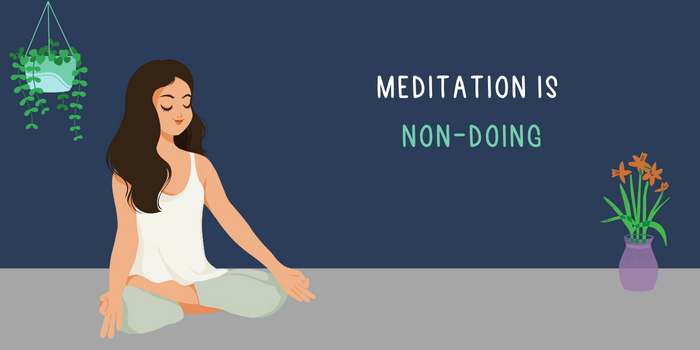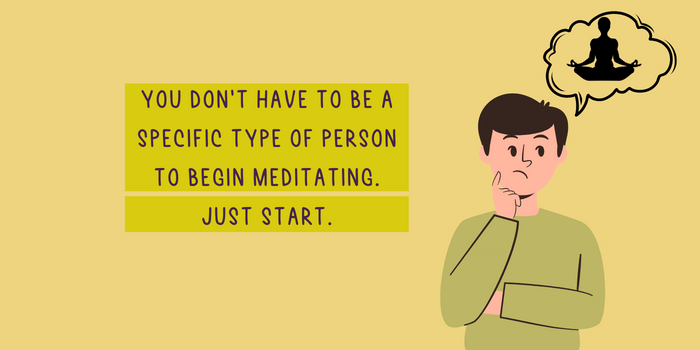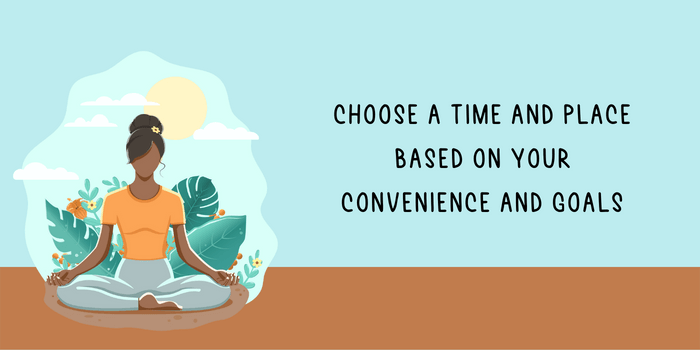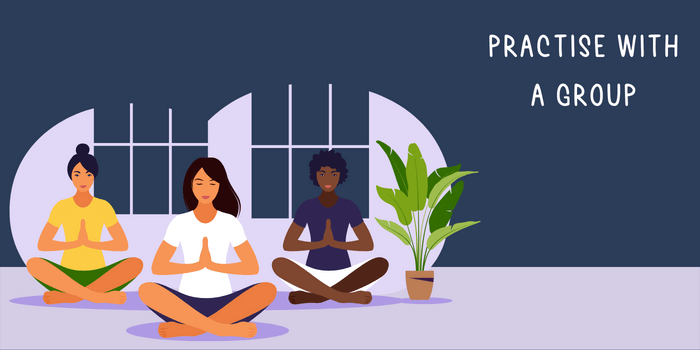Meditation is a non-negotiable part of my daily routine now, but I must admit it was a hard habit to build.
Meditation has many positive effects, but most people find it hard to commit to a daily practice.
Other habits that we try to build, say working out or learning, involve doing something. Meditation is the opposite of doing. It is non-doing.
It is difficult for us to tolerate inactivity. Humans have a tendency called action bias where we prefer action over inaction, even when we don’t know if the action would result in a positive outcome.
Evolutionarily, action provided an advantage for survival, thus becoming a behaviour that got reinforced. This bias persists in our modern life, driving most of our behaviours.
Sitting still on a meditation cushion therefore feels like time you are stealing away, when you should be doing something.
Want to build a lifelong meditation habit? Get comfortable with the idea of spending some time every day sitting still – non-doing.
Meditation will change your life, but first you must change your life a little bit to commit to the practice.
The antidote to seeking quick fixes
Before I made a serious commitment to meditation, I found myself stuck in a cycle of starting and stopping.
I would start every cycle expecting bliss to come pouring out, and then stop dejected after a week or two.
After a month I’d remember I need to do this for my mental health and wellbeing, so I would start again.
The problem was that I was seeking quick fixes. I wanted ROI for the time I put in. I wanted results and I wanted them now.
One day I made a small mental shift – I decided to simply meditate every day, regardless of how long I did it or how each meditation session felt.
I stopped expecting Buddha-like calmness when I meditated. All I had to do was to sit and meditate, even if it was for just 5 minutes a day. After a few weeks, I finally started seeing progress.
The antidote to the quick fix mentality is to zoom out, slow down, and reflect on the truth that any worthwhile transformation takes time.
Consistency compounds.
Go slow and steady for an extended period of time, then you’re getting somewhere. Get frenzied with impatience, and you let your progress slip through your fingers.
In a world where everyone is frantically rushing from one thing to the next and living on an unsustainable adrenaline fueled high, the ability to stay persistent and patient is a competitive advantage.
Don’t expect to become a proficient meditator overnight. Develop a reasonable plan to follow. Set up progress markers and small milestones. Celebrate successes and tweak the plan as needed. Stay patient.
Simple, but not easy.
Start where you are
Sometimes we worry we are not the right candidates for what we perceive to be such an arduous practice.
We may feel that we’re the most mentally messed up person in the world. We may be stressed out juggling family and a full time job. We may be in the throes of a heartbreak and feel like life has no meaning.
Don’t overthink. There is no right or wrong place to be. You don’t have to be a certain type of person to start meditating.
Just start. Wherever you are, whoever you are.
In her book How to Meditate, Pema Chödrön, an American Buddhist nun, illustrates this with the advice she gave to a college student struggling with anxiety and ADD. He wanted to start a meditation practice, but didn’t know how to find time in his busy life, with all the studying and his other obligations.
She advised that he meditate just 10 minutes first thing in the morning after he woke up, sitting up on the bed, before he even got out of bed.
The student reported back a week later. He’d woken up once at 2:30 am in panic, because of his huge to-do list. He wanted to jump out of bed and work on his tasks, but he remembered and stuck to his 10 minutes meditation commitment.
His experience was that even in those 10 minutes, everything slowed down enough for him to observe his restlessness. He found the mental space and clarity to mindfully work through his todo list and prioritize his tasks.
Meditation allowed him to settle down and see things with clarity, and he realized that not all the tasks needed to be done that very day. This calmed him enough to go back to sleep and wake up refreshed.
Even beginner meditators start having such experiences early on in their practice.
So, maybe you just have 10 minutes to commit to meditation. But even these 10 minutes can slow down your racing mind and allow you to come to your natural, basic self who has the wisdom to know what is the right action to take at any given moment.
There is only one thing to do. Just start where you are.
Start small
It’s challenging to build a daily practice, so go easy on the expectations you set for yourself.
If 10 minutes feel challenging for you, commit to just 5 minutes of meditation for the first day, or even 1 minute. Then slowly increase it.
You’re aiming to build a lifelong habit, so no need to rush the process.
Any worthwhile transformation is a slow-burn. Let it happen in its own time, but stay consistent with the habit, however small the daily actions may be.
Focus on building the long-term habit, not short-term spikes of activity that cannot be sustained.
Schedule a time and place
To avoid last minute overthinking about when to practice and where, schedule a time and a place.
Many people wonder whether it is better to meditate in the morning or in the evening. It is really up to you.
A morning meditation can make you mindful and calm to sustain you through the day. Meditating at night can help you relax and get a good night’s sleep.
Depending on your convenience and goals, choose a time. Once you choose a time, stick to it. Set an alarm if you must.
Train yourself to associate a certain place in your home with the practice. It could be a corner of your home office, or your living room, or your balcony. Every day, go to the same spot when it is time to meditate.
Repetition – in terms of the time and place – will help solidify the commitment and habit.
Set up the right environment
Don’t obsess too much over setting up the perfect environment. As long as you find a small corner in your house that feels relaxing, that is enough.
If it helps, you could build a small altar with a scented candle or incense, and the picture of a teacher you admire and connect with. But remember, this is not necessary. Do it if you feel it will make it easier to slip into the practice.
You may want to test your meditation seat. Get yourself a comfortable cushion and back support if you want to sit cross legged on the floor. Or you could even sit on a comfortable chair.
Set a timer to alert you when the time is up. It can be a small alarm clock or the timer on your phone.
Practise with a group
Beginners often find it can help immensely to practise with a group instead of going it alone.
A group brings a sense of support and external accountability. As you ease into the practice, you may slowly release this crutch of external support.
Our Become A Morning Person bootcamp helps you build a daily meditation practice through live guided sessions, along with a group of like-minded others.

Become A Morning Person Bootcamp
For calm mornings with a daily meditation & journaling routine
The advantage of following a structured program like this is that you completely eliminate overthinking and analysis paralysis. All you have to do is simply turn up for the sessions and follow the instructions.
In our bootcamp, we will also follow up with you if you miss a session. This adds an additional layer of accountability that gives you a strong positive nudge to show up and stay consistent.
My recommendation is to do this for 3 months for the habit to stick. By that time you would have developed sufficient automaticity of habit and knowledge to continue the practice on your own.
Understanding why you must build the practice
This is perhaps the most important piece of the puzzle, which becomes crucial as you will inevitably start feeling the frustration and lack of motivation to stay with the practice.
Unlike other habits like working out at the gym or studying for a degree, meditation does not have any quantitative measures of success.
If you’ve been working out consistently, you will see the progress on the weighing scale, and on the weights you’re able to lift. If you’ve been investing time in your studies, you will see the results on your marksheet.
But what about meditation? Yes, we gradually build the skill of remaining calm in trying situations and we get a clearer mind, but that is not something we can measure and put a number on.
The lack of a concrete measure like this can be demotivating to many people and they quit.
Before you start the practice, I recommend that you delve deeper into the benefits of meditation. Have a clear sense of why you want to do it. This clarity will help you guide the practice in the right direction, and stay the course when the going gets tough.
5 Whys – Find your personal reason
Personal development coaches use a technique called 5 Whys to help clients identify their core motivators.
Originally developed by Sakichi Toyoda at Toyota to improve their production, 5 Whys has a wide range of applications from understanding what has caused a problem to figuring out your deep motivations.
Start with the problem and ask why approximately 5 times, to drill down and get to the root cause of the original problem.
This could be how it goes.
I want to build a daily meditation practice
- Why do you want to build daily meditation practice?
Because I want to have control over my thoughts and emotions.
- Why do you want control over your thoughts and emotions?
Because I have made several mistakes in the past due to lack of control, and I don’t want to repeat the same mistakes.
- Why do you not want to repeat the same mistakes?
Because these mistakes were avoidable and have severely compromised my peace, happiness, and relationships with others. I want to do better.
- Why do you want to do better?
Because I’m tired of feeling this way and I believe it is possible to live a joyous life if I can just figure out how to do it.
- Why do you want to live a joyous life?
Because this is the only life I have, and I want to make the most of it.
Obviously, your 5 Whys may look a little different, but you get the idea.
Just go through the process, invest that time to introspect. Find a reason you truly feel strongly about so it feels like a meaningful enough pursuit that deserves your commitment.
Stop with 5 questions, don’t go on and on. Sometimes you may reach an answer before 5 questions – stop there. What matters is that you find a core motivator that truly resonates with who you are.
Next steps
Once you have reasonable clarity about why meditation is important for you, we can get into the next steps where we actually get started.
The right technique can help your practice immensely. In the next few articles in the series, I will get deeper into the technique and other aspects of meditation.





